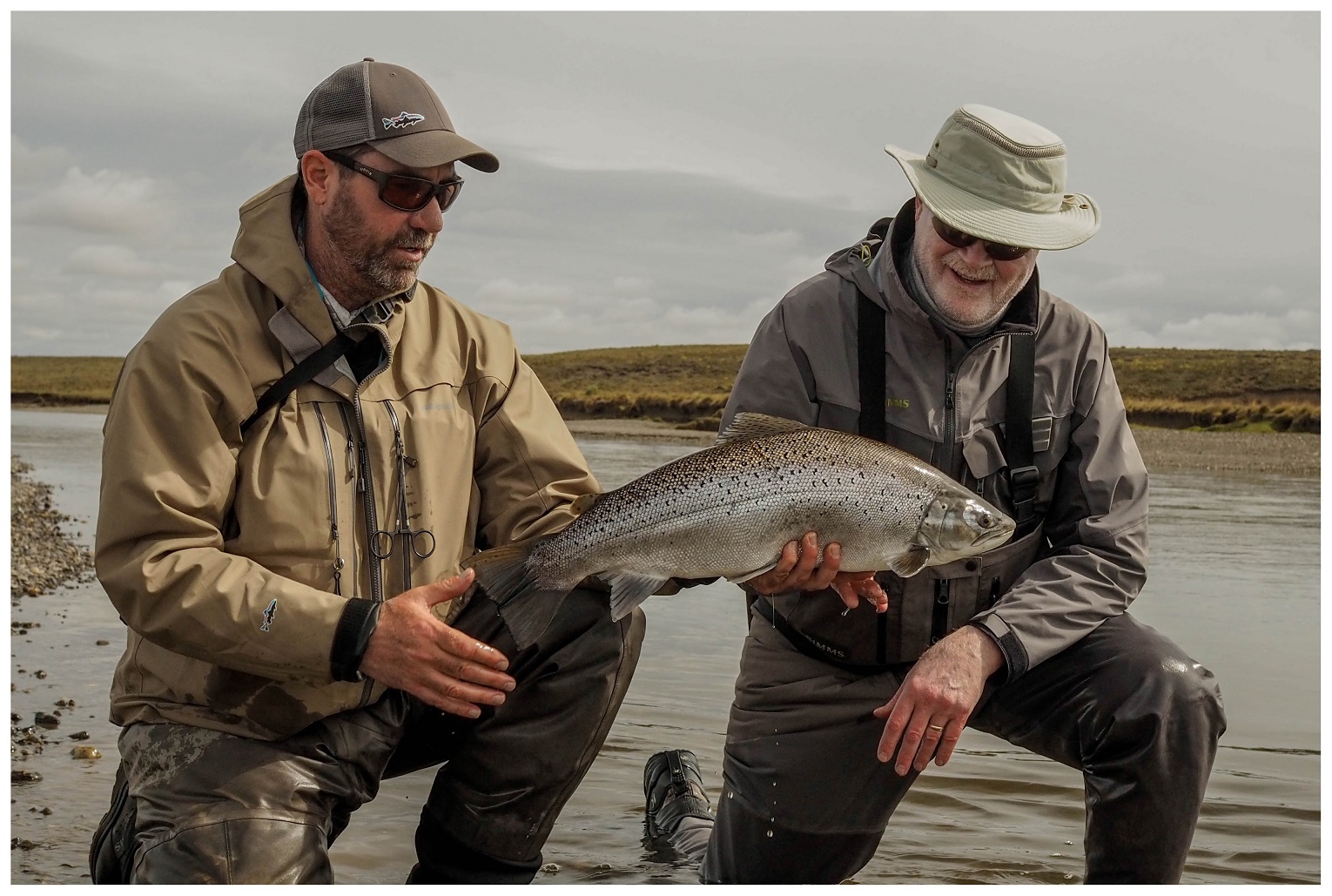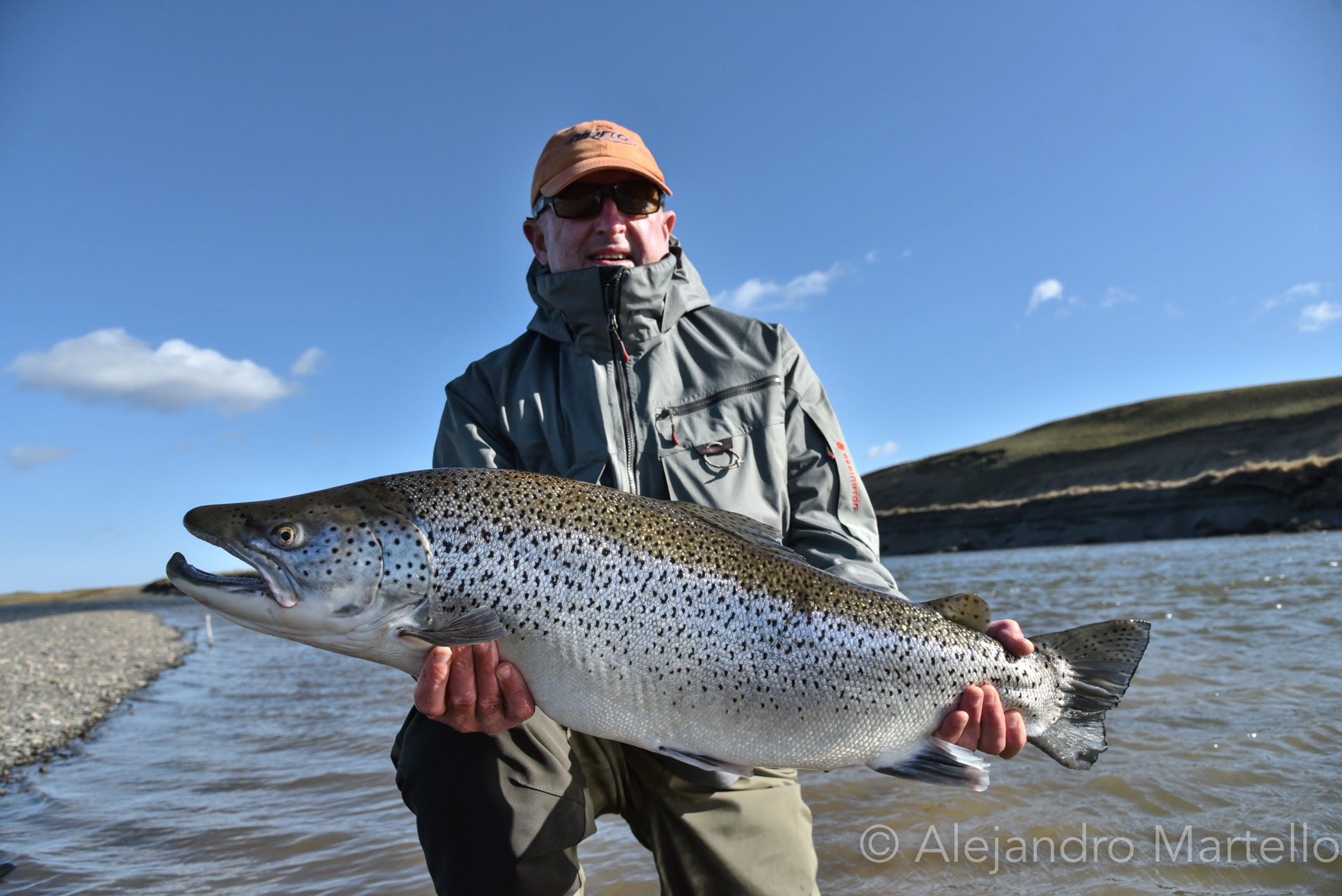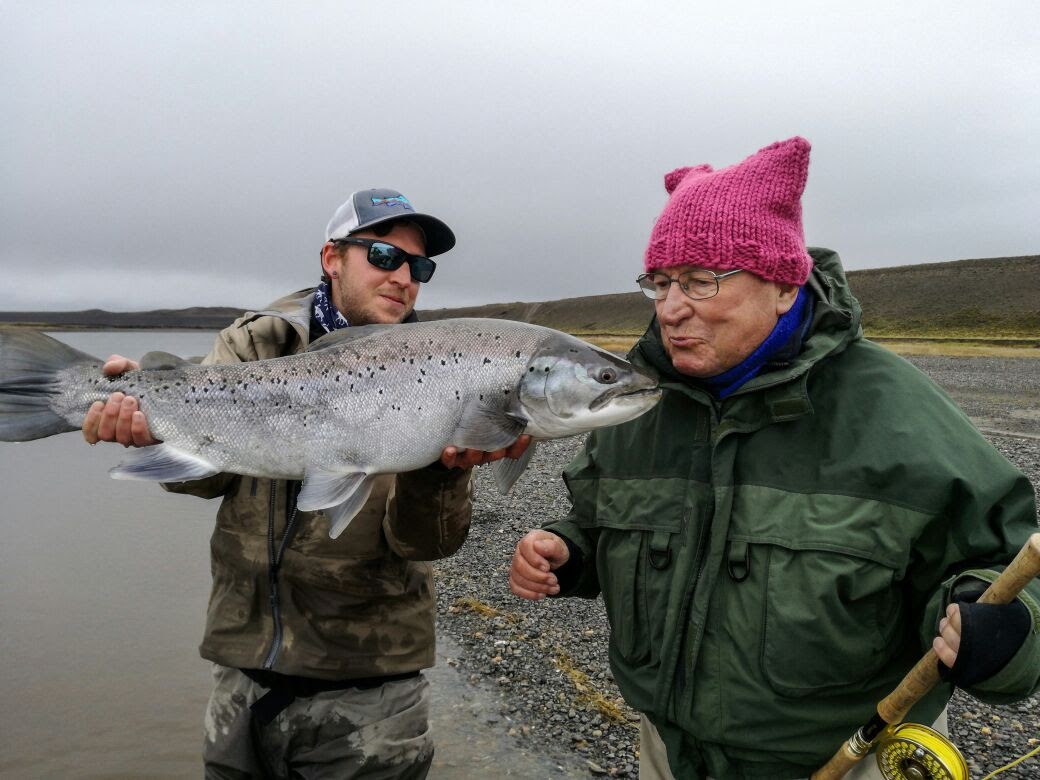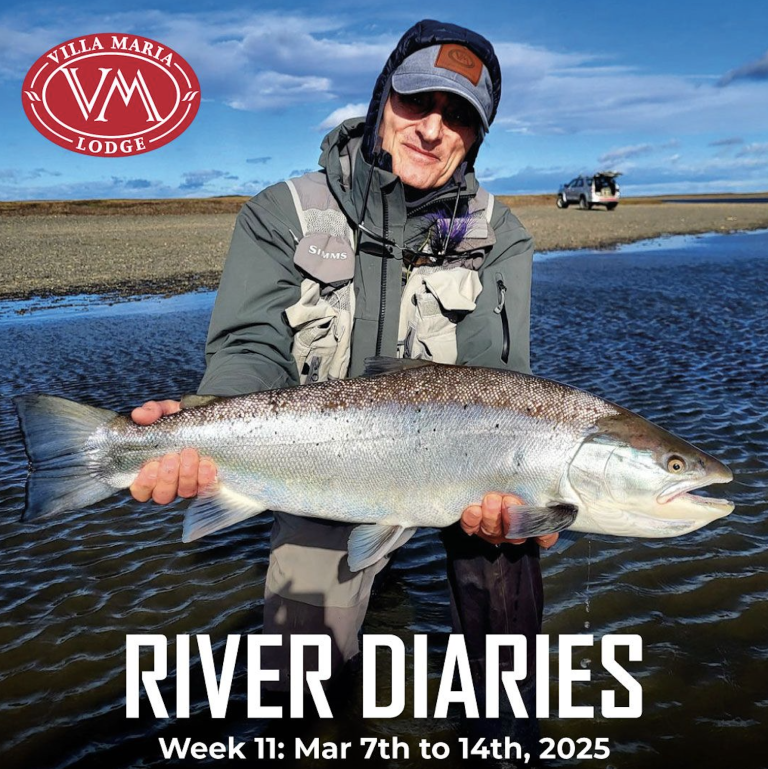When we stepped into the river for the first time in 2017, it was eerily similar to how we left it back in April 2016. There were no signs of the usual spring flooding caused by rain and snowmelt. We found our same rutted truck paths from last year. And the runs were flowing smoothly through their heads and crept slowly along their mid-sections. Wading and crossing the river was as easy as ever.
Considering what we found, we scrapped the traditional early-season setups—13-14 ft double-handed rods and dense sinking-tips—and replaced them with lighter speys, switch rods, and even single-handers. Lines, too, were adjusted accordingly: light sink-tips and floaters found their place. Of course, tippets and flies were also downsized, and Green Machines, Prince Nymphs and small rubber-legged were typically the first options fished through a run.
During January the river steadily dropped, giving us some of the most impressive fly-fishing experiences I’ve witnessed in many years guiding this river. Imagine casting a single hander, floating line, and a long, supple leader 40 feet to catch a double-digit chromer. This amazing fishing reached its pinnacle when Axel W. hooked a beast using a similar setup. It was 30-pounder… attached to a trout tippet!
This unreal fishing spanned the month of January and lasted until the first week of February. By then, rain had found the Rio Grande valley and its headwaters. The weather events that followed produced slight bumps in flows and, on some days, killed the water clarity.
Add rising water to a low river stacked with trout and the fish start running upstream, as fast as possible, so they can spread out along the river’s full length. This scenario came to define the last weeks of February. Fishing was more challenging, but it remained interesting as the fish actively motored from pool to pool. Again we adjusted our tackle and techniques as the river grew in size. The single-handed rods were eventually stowed and heavier tips were put to use. We still fished smaller nymphs, but during days when the water clarity was compromised we switched to bigger streamers, tubes, and intruder patterns.
Compared to January, February’s total catch numbers dropped. The average weight, however, was higher. Why? Easy. When the river suddenly rises but remains relatively low, the smaller fish are the first to bolt, while the bigger ones wait for more water. And these larger fish became our regular targets. February also ushered in some heavy wind. Our prevailing wind comes from the west, which blows downstream. This persistent easterly, on the other hand, felt like a three-week head-on collision.
In March the upstream wind stopped (thank you!) but some heavier rains arrived. The river spiked and colored up. With the change, the big guns made a comeback: 14 footers and heavy sinking-tips allowed guests to throw longer distances, wade deeper, and use bigger, heavier flies. Jean Daniel had the right attitude for grinding through the surly conditions, and he was rewarded with a 26-pound female sea trout followed by a surprising, and stunning, 14-pound steelhead.
Like I said at the start, 2017 was a peculiar season. The weather and the river showed us something unique. But it never stopped us from enjoying the best sea-run brown trout fishery in the world.
– Alejandro Martello
Villa Maria Lodge Fishing Manager















